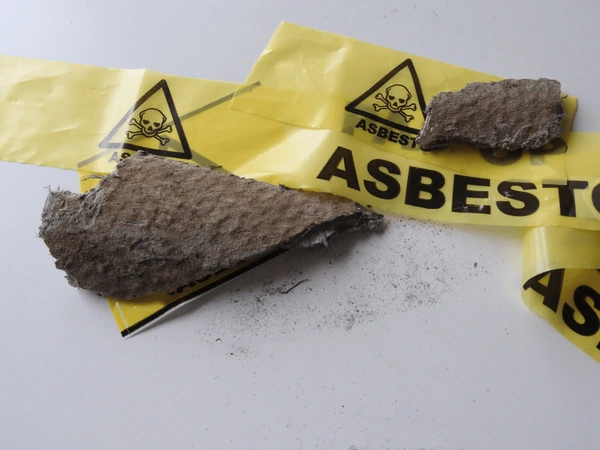It’s not just us that keep harping on about asbestos. Calls for the establishment of a national asbestos register are picking up pace, with the Daily Mail taking up the cause in their latest campaign. The drive is coming not just from asbestos campaign groups, but also from unions, highlighting the threat asbestos still poses to workers in the UK.
Despite general agreement about the issues with asbestos degradation and exposure, the government is yet to act, even after a cross-party group of MPs called for a timeline for asbestos disposal. So, what’s the issue with asbestos, what are campaigners calling for—-and what’s the realistic prospect of anything being done about it?
Registering the threat
The drive for new asbestos legislation is by the campaign group Asbestos Information CIC. They’re asking for two main changes to how asbestos safety is governed and managed: to setup a national asbestos register and a system of safety certification for buildings, denoting how much asbestos they contain, in a similar manner to how energy certificates work
The action by Asbestos Information CIC comes on the back of similar calls from the Trade unions Congress (TUC) to establish a legal duty to remove asbestos from public buildings, setting a 40-year deadline for the eradication of asbestos. This primarily targets schools and healthcare facilities, many of which were built in the period of reconstruction after the Second World War, right at the peak of asbestos use in construction.
These are just the latest in a line of recent calls to better manage asbestos. An all-party parliamentary group formed under the last government made a similar call as the TUC, while a new APGG is currently engaged in public hearings about the legacy of a leading asbestos product manufacturer, and whether it has adequately compensated victims.
The flaws with asbestos legislation
At present, an asbestos register is required for every public building and business premises which contain asbestos. This register should log all instances of asbestos within a building and the state of that asbestos, tracking any changes in condition so that deterioration is identified and addressed, limiting the health impacts of the asbestos.
However, many have pointed out that this is broadly inadequate. For starters, asbestos is deadly in any quantity, with the level of exposure only increasing the risk. There is no safe level of asbestos exposure, so if asbestos has degraded even slightly—something that is not readily identifiable from visual inspection—just a single fibre could be released and inhaled, damaging cells in the lungs, and causing a potential cancer risk.
The second major problem with the current situation is that these registers are independently maintained by building owners and managers with very little oversight. Inspections to determine how well asbestos is being logged and managed are very rare due to a lack of funding to the HSE. As such, asbestos logging and maintenance outside of the public sector is largely self-regulating. The long timescales over which asbestos exposure affects people could also be argued to disincentivise action, as by the time many people present symptoms of mild exposure, they would likely be long gone from a specific business
As for the 40-year deadline, this isn’t a new request. Indeed, a cross-party parliamentary group convened to assess the state of asbestos law advised this same policy just a couple of years ago. No action was taken, however – highlighting the apparent reluctance to impose further costs on businesses and the public sector at a time of higher taxes and lower budgets. The counterargument is the cost to the NHS, and thus the taxpayer, of hundreds of asbestos-related deaths a year, and a possible worsening of exposure rates and illnesses in the future.
Asbestos in homes
However, even these recommendations overlook the enormous amount of asbestos in private buildings, which falls outside the scope of almost all existing measures to record and manage asbestos. This asbestos not only isn’t tracked but isn’t widely known about. Despite a general awareness that asbestos could be in old buildings, many homeowners don’t think to ask about it when buying a property, and there is currently no legal requirement to tell people. As a result, it’s something that might only be turned up by a surveyor—or an unfortunate homeowner when doing a bit of DIY.
This is compounded by the number of items that can contain asbestos. Asbestos-containing materials (ACMs) include not just the expected uses for wall, attic, or boiler insulation, but also things like roof tiles, sheds and outbuildings, and even old household items and appliances, such as ironing boards or toilets. Asbestos can also be present on brownfield land—something that makes it prone to being disturbed as part of the current push to accelerate housebuilding on such sites.
All of this makes the current campaign both timely and a smaller step than is needed. A date for the complete removal of asbestos is one thing, but it needs to be complete, not just for the removal of the substance from public buildings. It needs to be not only private business premises, but also private households, and infrastructure such as pipes, a large percentage of which were made from asbestos cement and are still in use today. Assurances that the minerals in water have coated the inside of these pipes to prevent asbestos release provides scant comfort, given the propensity of old pipes to leak and burst.
–
The action being proposed by Asbestos Information CIC is both timely and well overdue. The government has an opportunity to take landmark action at a time of unprecedented housebuilding and renovations, with the need for net zero compliance and new homes looming. The hope is that this happens before it’s too late—and the problem of asbestos-related diseases is passed onto another unfortunate generation.

